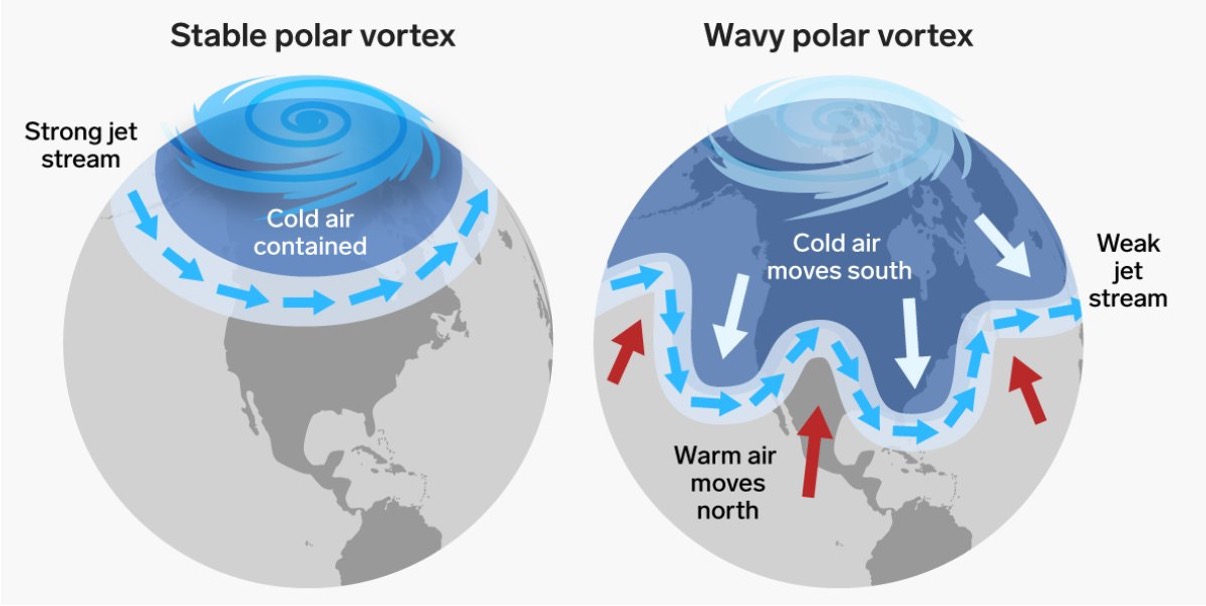
Figure 2. Stable vs. wavy polar vortex. Source: Smithsonian Magazine via UN Climate Change
Caitlin Griffith, Sustainability Coordinator
On Monday, February 15, millions of Texas awoke cold and in the dark. Winter Storm Uri dumped four inches of snow over DFW by the end of the day and brought with it a record-breaking temperature low of -2 degrees Fahrenheit to DFW, the coldest in 72 years. The Texas energy grid failure left 4.5 million Texans without power for days, hours, or not at all, depending on location of residence. More than 14.5 million residents of the state experienced a water-related crisis, whether through bursting pipes or boil-notices. Over two dozen deaths are linked to the energy failure, mostly caused by hypothermia and carbon monoxide poisoning.
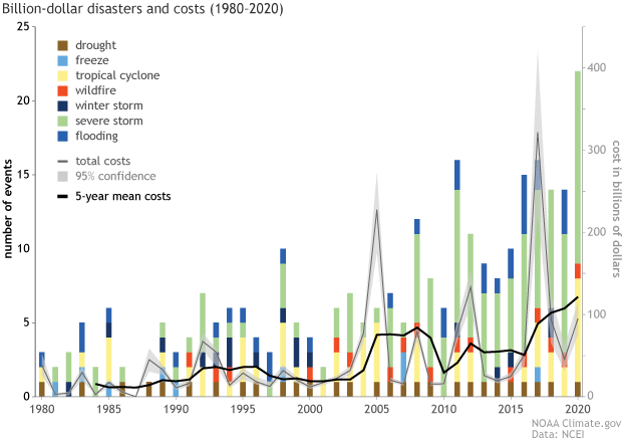
Figure 1. History of billion-dollar disasters in the US from 1980-2020. Source: NOAA
The combination of Winter Storm Uri and the Texas energy grid failure has led to environmental, economic, and social sustainability concerns that ultimately compromise public health. To combat these implications in the future, the public must broaden its level of civic engagement so that public policy and infrastructure remain robust to protect even the most vulnerable against the increasing frequency and intensity of natural disasters.
Let’s count the climate disasters of the past 13 months. In January 2020, mega fires were sparked that ravaged Australia and South America. Typhoon Goni, the strongest typhoon ever recorded, hit the Philippines in August. Days later, 42 miles of ice fractured and detached from the Arctic’s largest remaining ice shelf. Stateside, two hurricanes occupied the Gulf of Mexico for the first time in recorded history, record-shattering wildfires consumed California, and as of February 2021, a winter storm that powered down the Texas energy grid. Altogether, the US alone withstood “22 separate billion-dollar weather and climate disasters” in 2020. Climate disasters are increasing in frequency, intensity, and expense.

Figure 2. Stable vs. wavy polar vortex. Source: Smithsonian Magazine via UN Climate Change
What caused February’s wacky weather? Short answer: a sudden stratospheric warming (SSW [Sudden Stratospheric Warming] ). Long answer: according to the NOAA on January 28, “For the last several weeks, the stratospheric polar vortex has been weakening. What that means is the winds at 10 millibars (that’s the layer of atmosphere about 18 miles above the surface), which normally move from west to east around the pole, began to slow down and temperatures began to warm up. By January 5, the winds actually switched direction and began moving in the opposite direction. The timing of wind reversal is considered the start of the sudden stratospheric warming event… In general, disruptions of the polar vortex can cause cold air outbreaks over much of Europe, Asia, and the eastern USA. Other regions, like the Canadian Arctic and subtropical Africa and Asia may see much warmer than normal temperatures. However, there can be a lot of variability from one SSW [Sudden Stratospheric Warming] event to another in terms of who gets hit with the extreme cold and snow that we’ve come to associate with these polar vortex events…. In the future, climate models do not agree about what will happen in a warmer climate. Some show significant strengthening of the polar vortex while others show weakening.” In other words, the effect of climate change on SSW [Sudden Stratospheric Warming] -induced winter storm severity is unpredictable.
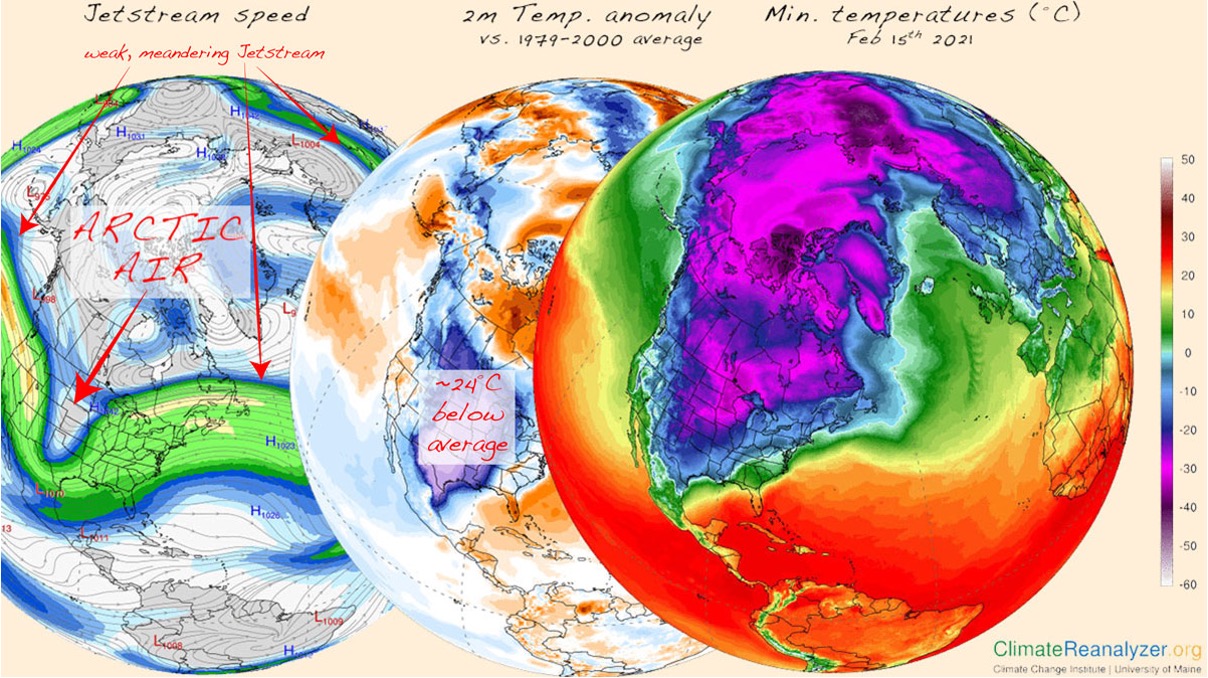
Figure 3. Observed wavy polar vortex. Source: University of Maine Climate Change Institute
The connection between the winter storm and the Texas energy grid lies in one fundamental thing: weatherization.
On January 1, 2002, Texas officials opted to deregulate the grid. According to the 2018 Edition of TCAP’s Deregulated Electricity in Texas report (PDF [Portable Document Format File] ), “In theory, the free market and competition would keep a lid on rates. There would be more choices, and better service.” It would hypothetically break up vertically integrated utility monopolies to do so. On the flip side, it meant that Texas would no longer be held to the standards of federally-held contracts or be able to rely on the federal grid in case of emergency, resulting in “the only state in the continental United States with an independent and isolated grid,” according to Reuters. Prices would not be determined by political appointees, but by businesses who may ratchet up (PDF [Portable Document Format File] ) prices during unusual weather events.
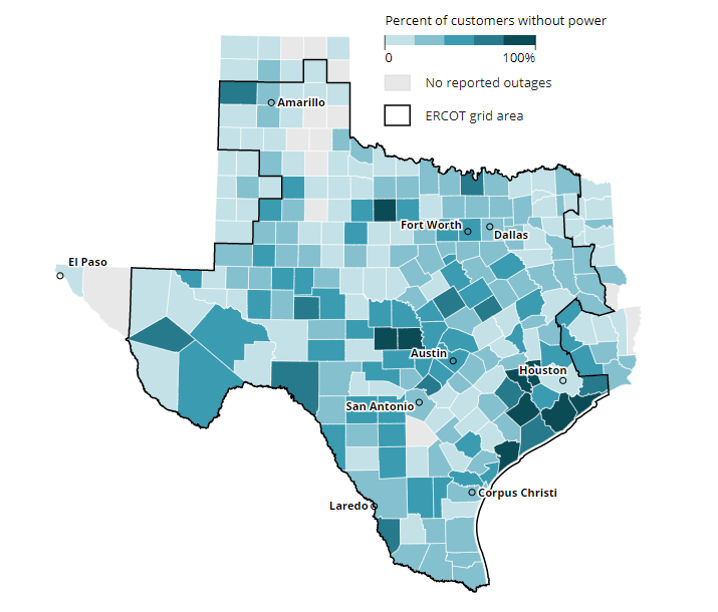
Figure 4. Power outages observed in Texas 10:00 a.m. - 11:00 a.m. on February 16. Source: Texas Tribune.
In reality, energy reliability has taken a hit. “During the transition into deregulation, back in 2001, the state enjoyed the highest reserve margin in the nation. This helped to calm the anxieties of some Texas lawmakers and the public after California’s market began collapsing during that state’s transition to deregulation… Texas enjoyed excess capacity of up to 25 percent even during the hottest days of summer. Such a claim could not be made in 2011. The National Electric Reliability Corporation reported ERCOT [Electric Reliability Council of Texas] ’s reserve margin ratio in 2011 at about 14 percent, which marked a nearly 40 percent decline from pre-deregulation levels and far below the national average in 2011 of around 25 percent. In fact, after 10 years of deregulation the Lone Star State possessed the lowest reserve margin in the nation, according to NERC [Natural Environment Research Council] ,” according to the TCAP report (PDF [Portable Document Format File] ). In the summer of 2020, ERCOT [Electric Reliability Council of Texas] ’s reserve margin climbed from 8.6% to 10.6%. To keep costs low, Texas energy companies began running on scarcity, which placed Texans at greater risk of outages across the board. Deregulation has not incentivized companies to weatherize generators for past infrequent weather events. In fact, ERCOT [Electric Reliability Council of Texas] neglected to institute weatherization recommendations made by FERC and NERC (PDF [Portable Document Format File] ) after the 2011 winter event. Both the Texas governor and the North American Electric Reliability Corporation (NERC [Natural Environment Research Council] ), who is a regulator of power generators in the US, are now calling for “mandatory standards for “winterizing” energy infrastructure,” according to the Texas Tribune.
Thermal sources such as natural gas, coal plants, and nuclear, supply up 66% of Texas’s electricity profile. Wind accounts for about 20% of the state’s electricity. According to ERCOT, “As of 6:30 p.m. [on February 18], nearly 36,000 MW [Megawatt] of generation remains on forced outage due to this winter weather event. Of that, approximately 21,400 MW [Megawatt] is thermal generation and the rest is wind and solar.” This data shows that wind turbines were neither the sole cause of energy disruption nor the main culprit. At the highest point of the weather event, about half of electricity generation (PDF [Portable Document Format File] ), or 52,277 MW [Megawatt] , was shut down. Texas was four minutes and thirty-seven seconds away from having a statewide blackout for months, according to former ERCOT CEO Bill Magness.
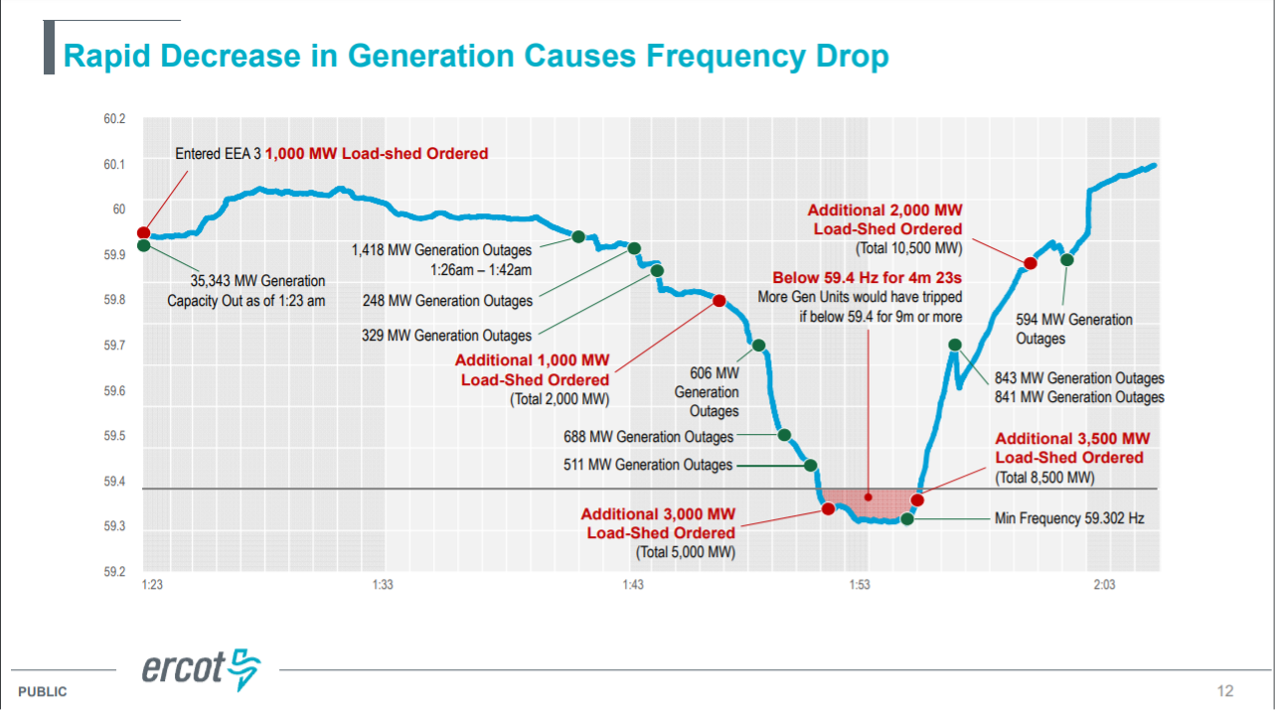
Figure 5. If the ERCOT [Electric Reliability Council of Texas] system frequency levels had remained at or below 59.4 for 9 minutes or longer, a statewide blackout would have occurred for an indeterminate amount of time. Texas sat in this spot for 4 minutes and 27 seconds. Source: ERCOT (PDF [Portable Document Format File] ).
Lower income communities, minorities, women, and those experiencing health problems were disproportionately impacted by the storm and the ERCOT [Electric Reliability Council of Texas] grid failure. While some Texans did not lose power at all, millions of Texans were out of power for 70.5 hours (PDF [Portable Document Format File] ), the longest outage in state history. Nearly half of Texans were under boil-water notices. Historically, disasters affect the most vulnerable first and with the heaviest hand. According to a 2019 Columbia article entitled, Energy, Poverty, and Health in Climate Change: A Comprehensive Review of an Emerging Literature, “As climate change increases the frequency, duration, and magnitude of extreme weather events, it is important to consider the populations that are most vulnerable to the impacts of such events within the context of household energy use.” Race, household income, gender, and health status are the main determinants that predicate energy insecurity. Energy insecurity is directly linked to food insecurity, housing insecurity, institutional racism, income inequality, public health disparity, and so much more. Minorities, especially African Americans, more frequently suffer from higher rates of energy cost burdens than non-Hispanic White Americans. Single mothers are specifically vulnerable as they take on both financial and caretaking burdens of being an independent parent. It is important to note that these communities have already been hit the hardest by the COVID-19 pandemic, which is also being nudged on by climate change.
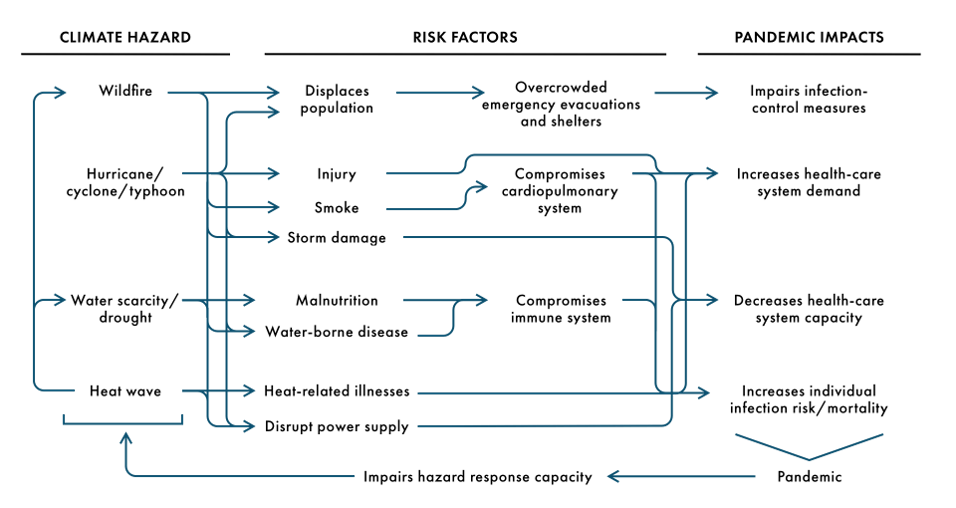
Figure 6. Flow chart linking climate hazards to pandemic impacts. Source: CIGI.
Through the lens of the UN Sustainable Development Goals, we see that social, economic, and environmental challenges are all related to climate change. It is imperative that Texans increase civic engagement to address fundamental concerns exposed by this disaster.
References
“THE 17 GOALS | Sustainable Development.” United Nations, United Nations, sdgs.un.org/goals.
Cadham, John. “COVID-19 and Climate Change.” Centre for International Governance Innovation, Centre for International Governance Innovation, 24 August 2011, www.cigionline.org/articles/covid-19-and-climate-change.
“DFW - February Normals, Means, and Extremes.” National Weather Service, NOAA [National Oceanic and Atmospheric Administration] , 25 February 2021, www.weather.gov/fwd/dfw02nrm.
Dobbins, James, and Hiroko Tabuchi. “Texas Blackouts Hit Minority Neighborhoods Especially Hard.” The New York Times, The New York Times, 16 February 2021, www.nytimes.com/2021/02/16/climate/texas-blackout-storm-minorities.html.
Douglas, Erin. “Gov. Greg Abbott Wants Power Companies to ‘Winterize.’ Texas’ Track Record Won’t Make That Easy.” The Texas Tribune, The Texas Tribune, 20 February 2021, www.texastribune.org/2021/02/20/texas-power-grid-winterize/.
Dyer, R.A. “Deregulated Electricity in Texas: A Market Annual.” Texas Coalition for Affordable Power, Texas Coalition for Affordable Power, 2018, tcapstaging.wpengine.com/wp-content/uploads/2018/03/TCAP-HistoryofDeregulation-2018.pdf (PDF [Portable Document Format File] ).
“ERCOT [Electric Reliability Council of Texas] ’s Reserve Margin Climbs 2% for Summer 2020.” Electric Reliability Council of Texas (ERCOT), Electric Reliability Council of Texas (ERCOT), 5 December 2019, www.ercot.com/news/releases/show/195806#(~(text=The%20planning%20reserve%20margin%20for,summer%202019%20peak%20demand%20season.
Jessel, Sonal, et al. “Energy, Poverty, and Health in Climate Change: A Comprehensive Review of an Emerging Literature.” Frontiers, Frontiers, 11 November 2019, www.frontiersin.org/articles/10.3389/fpubh.2019.00357/full.
L’Heureux, Michelle. “On the Sudden Stratospheric Warming and Polar Vortex of Early 2021.” On the Sudden Stratospheric Warming and Polar Vortex of Early 2021 | NOAA [National Oceanic and Atmospheric Administration] Climate.gov, NOAA, 28 January 2021, www.climate.gov/news-features/blogs/enso/sudden-stratospheric-warming-and-polar-vortex-early-2021.
Lonneman, Caroline, and Caitlin Griffith. “U.S. Climate Change in 2020.” UTD Sustainability, 5 October 2020, sustainability.utdallas.edu/news/20201005c/.
McLaughlin, Tim, and Stephanie Kelly. “Why a Predictable Cold Snap Crippled the Texas Power Grid.” Reuters, Thomson Reuters, 21 February 2021, www.reuters.com/article/us-usa-weather-texas-power-insight/why-a-predictable-cold-snap-crippled-the-texas-power-grid-idUSKBN2AL00N.
“Report on Outages and Curtailments During the Southwest Cold Weather Event of February 1-5, 2011.” Federal Energy Regulatory Commission, Federal Energy Regulatory Commission, August 2011, www.ferc.gov/sites/default/files/2020-05/ReportontheSouthwestColdWeatherEventfromFebruary2011Report.pdf (PDF [Portable Document Format File] ).
“The Rising Cost of Natural Hazards.” NASA [National Aeronautics and Space Administration] Earth Observatory, NASA, 30 March 2005, earthobservatory.nasa.gov/features/RisingCost/rising_cost5.php.
Smith, Adam B. “2020 U.S. Billion-Dollar Weather and Climate Disasters in Historical Context: NOAA [National Oceanic and Atmospheric Administration] Climate.gov.” 2020 U.S. Billion-Dollar Weather and Climate Disasters in Historical Context, NOAA, 8 January 2021, www.climate.gov/news-features/blogs/beyond-data/2020-us-billion-dollar-weather-and-climate-disasters-historical.
Woodward, Aylin, and McFall-Johnsen Morgan. “Climate Disasters in the US Broke Records in 2020. Scientists May Now Know Why: Earth Was the Hottest It Has Ever Been.” Business Insider Australia, Business Insider Australia, 15 January 2021, www.businessinsider.com.au/climate-disasters-hottest-year-record-earth-2020-2021-1.